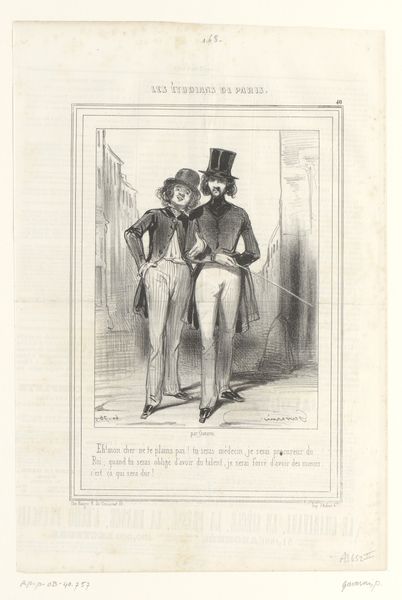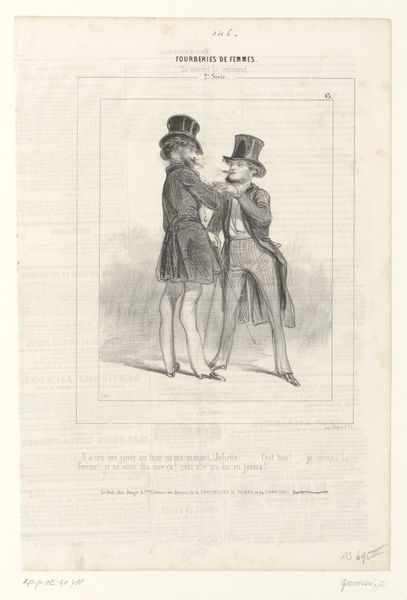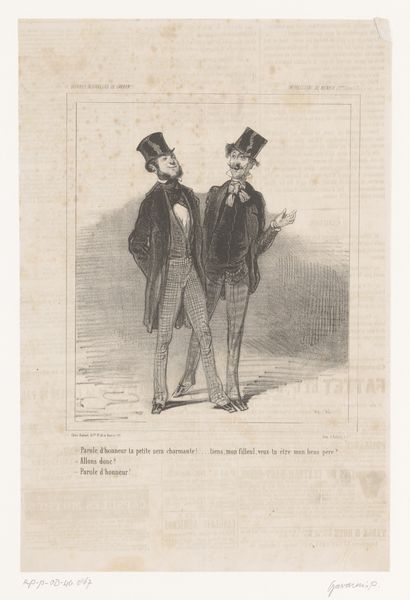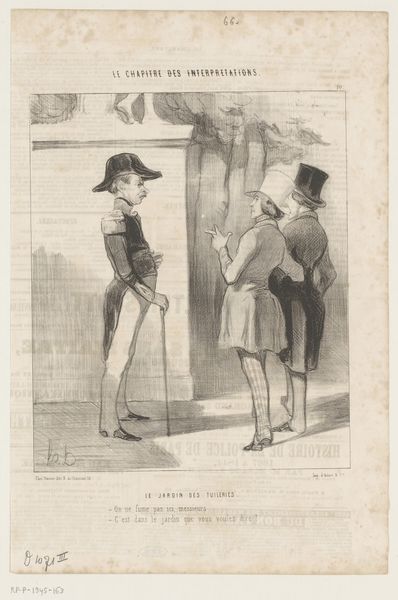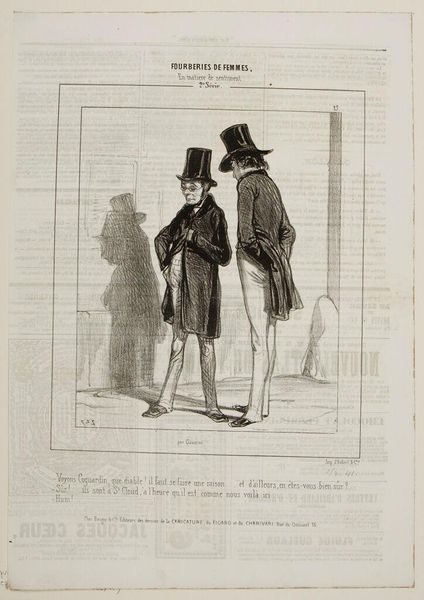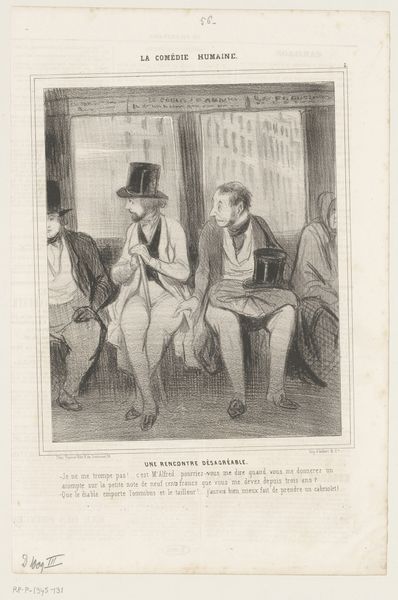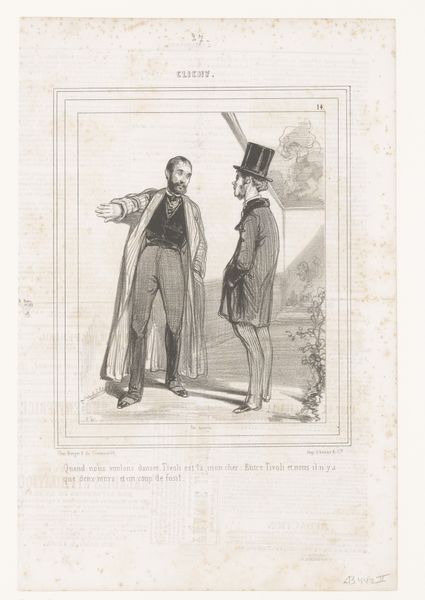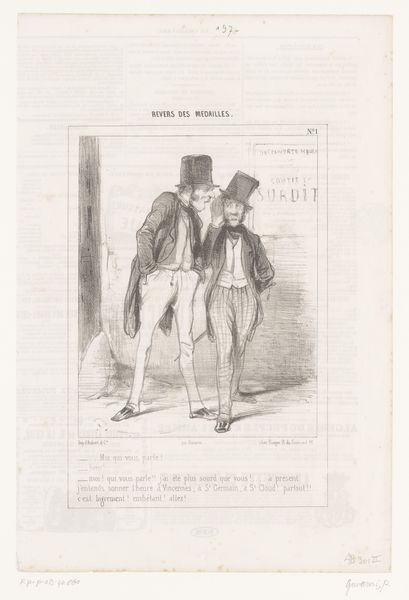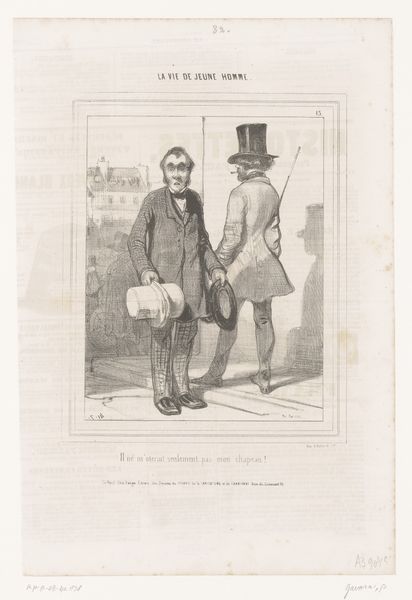
drawing, pencil, pen
#
portrait
#
drawing
#
light pencil work
#
quirky sketch
#
pencil sketch
#
figuration
#
personal sketchbook
#
idea generation sketch
#
sketchwork
#
romanticism
#
pencil
#
sketchbook drawing
#
pen
#
genre-painting
#
storyboard and sketchbook work
#
sketchbook art
#
initial sketch
Dimensions: height 363 mm, width 236 mm
Copyright: Rijks Museum: Open Domain
Curator: What a deliciously tense drawing. The way those two figures are positioned—are they confronting each other, or deliberately ignoring one another? Editor: Indeed, that air of suspicion is palpable! This is "Twee mannen in een trappenhuis wantrouwen elkaar"—Two Men in a Stairwell Mistrusting Each Other—created around 1840 by Paul Gavarni. It’s a genre scene, primarily rendered in pencil, and currently residing in the Rijksmuseum. Curator: The architecture of that stairwell...almost a cage. Are they trapped by their own paranoia, or societal constraints? The bars visually reinforce the feeling of unease and confinement. It seems they wear a costume, part of a ritualized drama. Editor: Gavarni masterfully utilizes line weight to differentiate the foreground from the background, pushing one figure forward while the other recedes. Observe how the darker lines around the man leaning on the railing pull him into our space, emphasizing his physicality and immediacy. The man further back, in lighter values, is presented as less defined. Curator: It suggests a hierarchy, doesn't it? Or at least a psychological distance. He leans away as though wanting to flee the tension, a phantom-like presence already caught up in memories of his predicament. The fashions feel specific to a certain moment, a sartorial snapshot that echoes codes of conduct. Editor: Consider the semiotic weight of those top hats, symbols of bourgeois respectability and ambition in that era. Their almost cartoonish size hints at the artifice of social roles. The figures’ poses imply not only psychological positioning but serve a compositional function, creating both dynamic movement through their offset balance and a feeling of contained drama within the defined space. Curator: Absolutely. The entire scene feels theatrical, almost as if these men are archetypes enacting a familiar script. Their postures echo a shared narrative of caution and repressed animosity. In many ways, it serves as an important reminder that fashion, while outwardly decorative, can conceal and project inward conflicts. Editor: A fascinating glimpse into the visual languages and narrative economies of the Romantic period, isn't it? The visual cues certainly invite deeper exploration into individual motives and potential societal dramas embedded within that confined spatial setting.
Comments
No comments
Be the first to comment and join the conversation on the ultimate creative platform.
